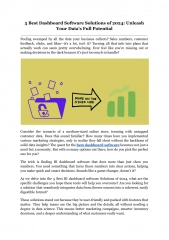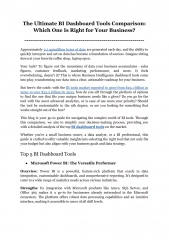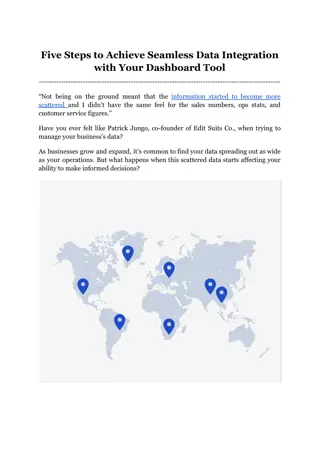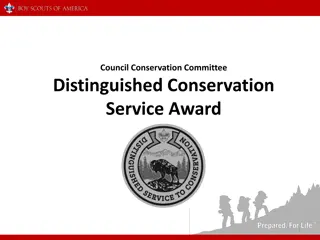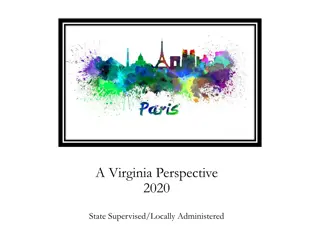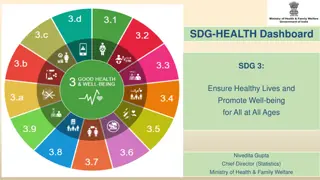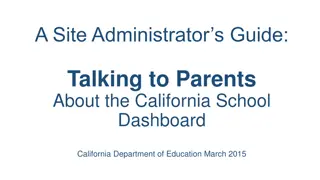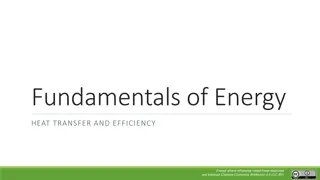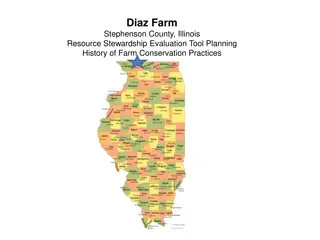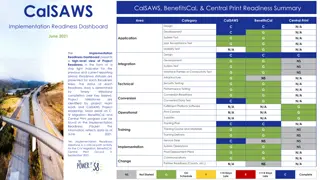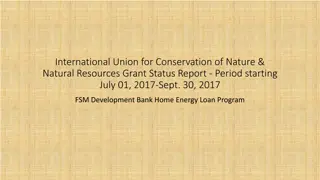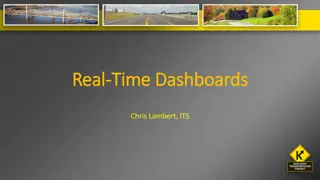The uConserve Dashboard - Driving Conservation of Natural Resources
The uConserve Dashboard aims to raise awareness and promote conservation of natural resources through insightful analytics and actionable recommendations. Focusing on electricity, water, and gas usage, the project seeks to empower users to make more sustainable choices, ultimately aiming to achieve significant cost savings and reduce environmental impact. By utilizing fine-grained data analysis and visualization tools, the project sets out to provide valuable insights for homeowners and policymakers alike, with a vision to address macro-level issues like the California water crisis. Leveraging a variety of data sources and engaging in behavior change psychology, the project is geared towards driving positive environmental change in a comprehensive manner.
Download Presentation

Please find below an Image/Link to download the presentation.
The content on the website is provided AS IS for your information and personal use only. It may not be sold, licensed, or shared on other websites without obtaining consent from the author. Download presentation by click this link. If you encounter any issues during the download, it is possible that the publisher has removed the file from their server.
E N D
Presentation Transcript
The uConserve Dashboard Rahul Bansal, Lisa Kirch, Nital Patwa W210 - Summer 2015
Goals and Potential Impact Our goal is to drive awareness and conservation of the world s natural resources through compelling analytics, insightful visualizations, and targeted, actionable conservation recommendations. Electricity o 20% of electricity in homes is wasted1 o Corresponds to $40 billion and 50% of US coal usage annually1 o In Austin alone, if 500K houses reduce usage 5% >$2.5M savings Water o US water consumption per capita is 2X + compared to other industrialized nations2 Gas o Often times a trade-off between gas and electricity usage o Is it possible to optimize when to use which resource? 1. 2. 3. http://www.ted.com/talks/alex_laskey_how_behavioral_science_can_lower_your_energy_bill http://green.blogs.nytimes.com/2012/02/15/tracking-how-the-world-guzzles-water/?_r=0 http://www.finweb.com/real-estate/gas-or-electric-which-is-cheaper.html#axzz3cPunnls5
Evolution of our Thinking - Focus on the results we want to drive - What data do we need to support to support those decisions - Psychology of behavior change in energy consumption - Perform analytics that drive action instead of just information - Focus on visualizations - Build UI mockups first so we have an end product in mind - Discover available datasets - Explore granularity - Let data determine our outputs
Minimum Viable Product Use fine-grained, per-household data for electricity Perform time-series, component, and behavioral analysis Create actionable insights for the home owner Develop basic visualization framework to deliver results and recommendations Stretch Goals Draft recommendations for policy makers based on detailed resident usage information Move beyond consumer dashboards and work on macro issues such as the California water crisis Develop comprehensive web solution
Data Sources As we began searching for data sets to support our project, we came across many publically available sources. A few are listed below. Pecan Street Dataport - disaggregated electricity, gas, and water data at the minute level (2011-2014) U.S. Energy Information Administration o Residential Energy Consumption Survey (RECS) o Updated Buildings Sector Appliance and Equipment Costs and Efficiencies (2015) o Residential Gas Usage Data USGS Water Usage Data Water Footprint Network - National Water Footprint Statistics OpenWeatherMap - weather data, forecasts, precipitation Berkeley Lab Home Energy Scoring Tool and Home Energy Saver Cost of electricity per kwh, cost of water per cubic foot, cost of gas per thousand cubic feet
Pecan Street Data World s largest source of disaggregated customer energy data for university researchers around the world. Resource usage data on more than 1,200 residences in TX, CO, CA Electricity usage data per household at minute intervals Sub-circuit data to assist labeling o Broken out into washer/dryer, dishwasher, furnace, AC, refrigerator, water heater, indoor and outdoor plugs Majority of data from Austin for 2013-2014 Survey data o House size, # floors, # rooms, age, # residents Appliance audits o Manufacturer, model, age, power (BTUs) Weather data
Analysis Roadmap Phase 1: Time Series Analysis Phase 2: Behavior Extraction Phase 3: Component Analysis Phase 4: Pattern Identification and Clustering Tools: Python Pandas and/or R Custom Tooling
Daily Usage Time Series Winter Spring 0.5 0.5 Summer Fall 3 0.5 0.5
Behavior Extraction Post-dinner 9- 10pm Post-Dinner 9- 10PM Why Gap?
Summer Day Usage (08/01/13) Natural Cooling Heavy Usage From?
Per-Minute Usage Histogram Quad-Modal Distribution Centered at 0.5, 3, 6 and 8 W-H/Min Contribution to yearly usage: 61%, 32%, 5%, 0.5% 61.5% 32.5% 5.35% 6 0.5% 8 2 4
Next Steps Complete data gathering Full data profiling Continue principle component analysis and time series analysis Begin to draft final visualizations and think about web-based deliverable



